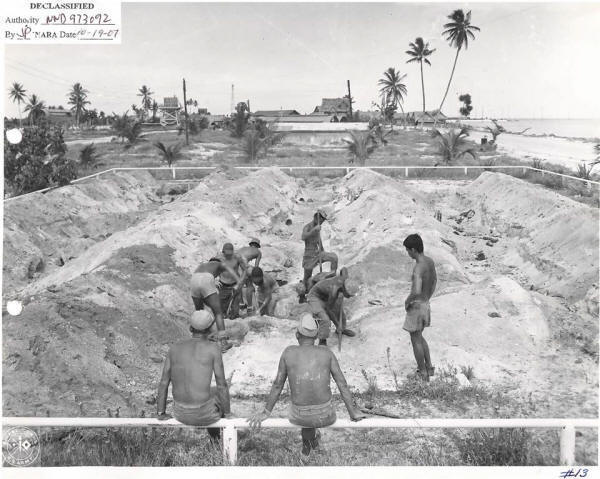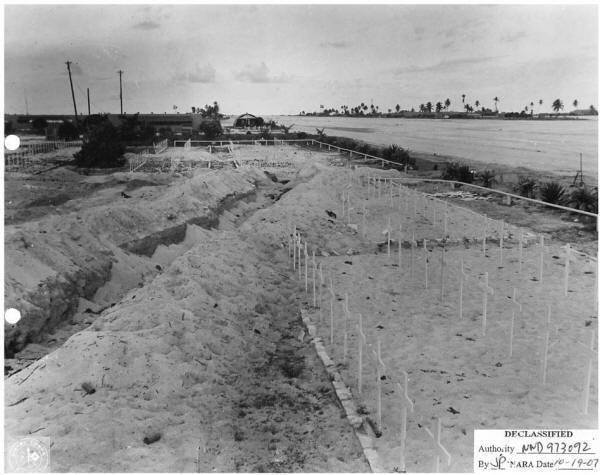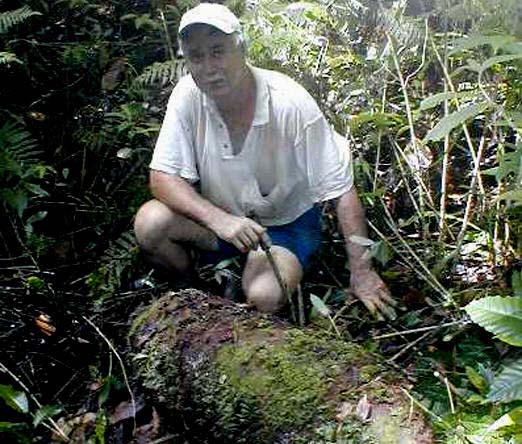THE FORGOTTEN MARINES OF TARAWA
During late-November 1943 one of the most savage battles in the history of the Marine Corps took place on the tiny island of Betio, located in Tarawa Atoll.
The capture of this island took three days and cost the lives of 990 Marines and Navy Corpsmen. In addition to these, another 2,200 were wounded.
The American public back home was shocked by news of this bloodbath--all for such a tiny piece of coral in the Pacific. Following the battle we buried our dead on the island and the war moved on. In time other events and battles overshadowed the public's memory of Tarawa.
Following the end of the Second World War, Americans returned to Tarawa to recover those of our men who were interred in a number of cemeteries on the island. What happened during the recovery operations has, to my knowledge, never been revealed to the American public. The shocking truth is that the bodies of about 300 Marines who were killed and buried at the cemeteries on Tarawa were never recovered. There they remain to this day in unmarked graves, many of which are now beneath the houses of the local residents. Read the official 1946 Report
ONE OF THE CEMETERIES ON BETIO, TAWARA ATOLL
GRAVES AT CEMETERY 33 - BETIO, TARAWA ATOLL
The below photograph was taken by my father when he flew in to Hawkins Field on Tarawa sometime in 1945. What is interesting is name on the grave marker behind the one marked "Unknown." That name is "Albert M. Rout." Private Albert M. Rout was indeed killed at Tarawa, however official records list his status as "Missing in Action or Buried at Sea." His body was one of the 300 that was not found when the graves were excavated in 1946.

EXCAVATIONS IN PROGRESS IN 1946

1946 EXCAVATIONS AT CEMETERY 33

THE LOCATION OF CEMETERY 33 TODAY
The location of Private Rout's grave is approximately even with, and to the left of the tip of the arrow marked "East."

SPECIAL VMB-613 FRIEND - STAN GAJDA
Stan Gadja is the man on the ground doing the work at Tarawa. Stan is an Australian expatriate who currently lives on Ponape. He is seen below with a 500lb bomb from the bomb load of a VMB-613 aircraft that was lost over Ponape in February 1945. Stan travels the Pacific at his own expense locating American and Australian MIAs from World War II. Prior to his Tarawa expedition, his most famous work involved location the remains of the Marine Raiders who were killed during the famous raid on Makin Atoll.
